Abstract
The excitability changes of myotatic reflex arcs have been investigated in 36 volunteers by two methods (tendon reflex and tonic vibration reflex) in a bilateral invertigation of soleus, quadriceps, biceps femoris, and tibialis anterior after caloric stimulation of the labyrinth. The extensor myotatic reflexes are facilated during the irrigation and the nystagmus phases. Contrary to the soleus, quadriceps facilitation is not symmetrical during the phase of nystagmus but predominates on the side opposite to the expected axial deviation. The short biceps femoris reflexes are slightly facilitated. The postural modifications arise from differences in the degree of bilateral facilitation of the extensors.
Full text
PDF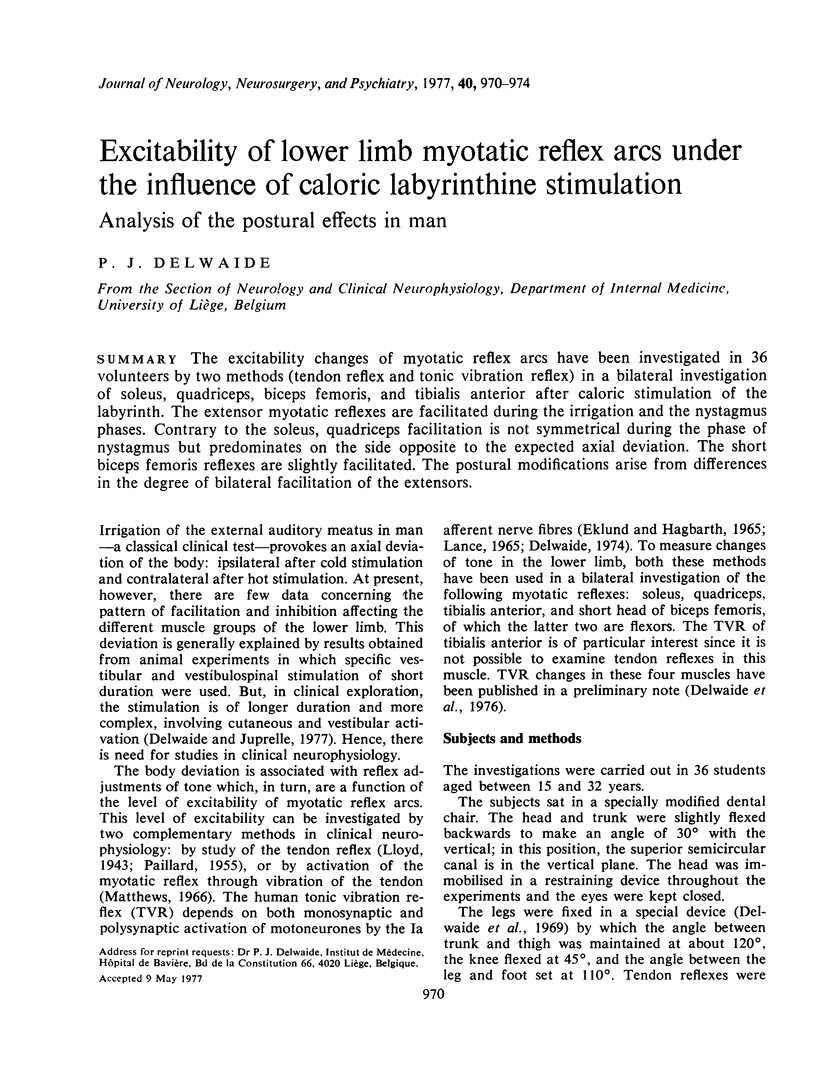
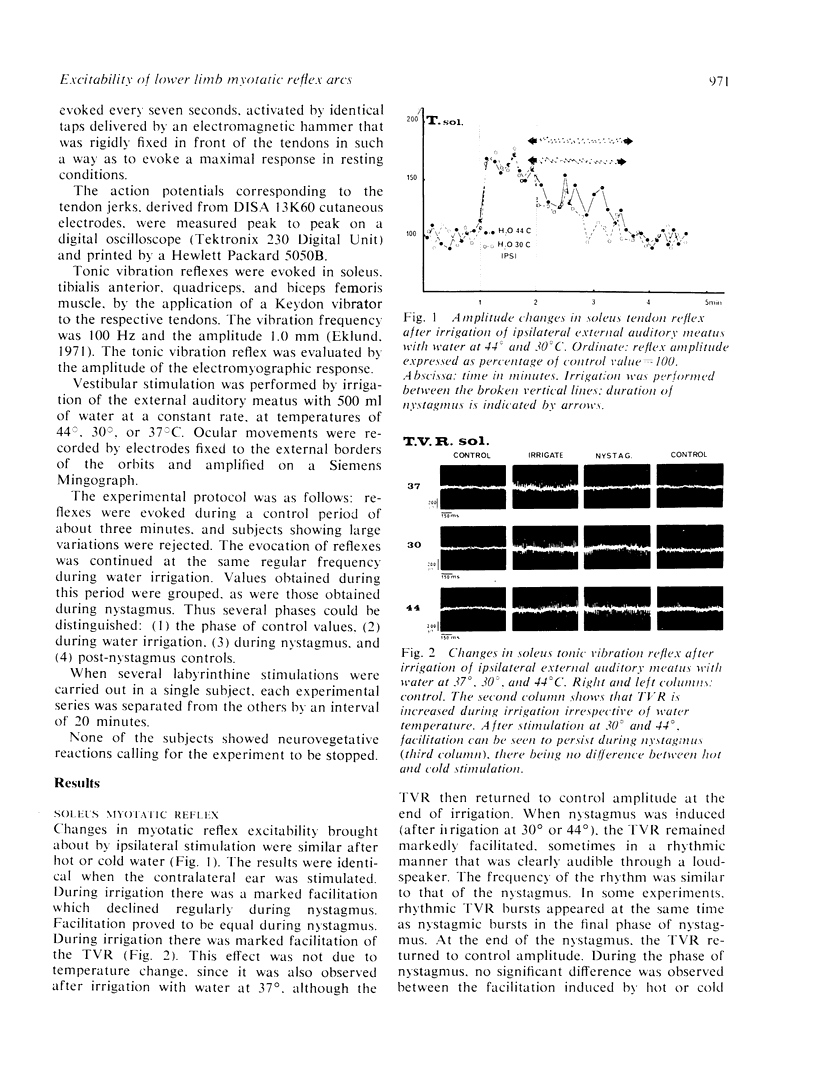
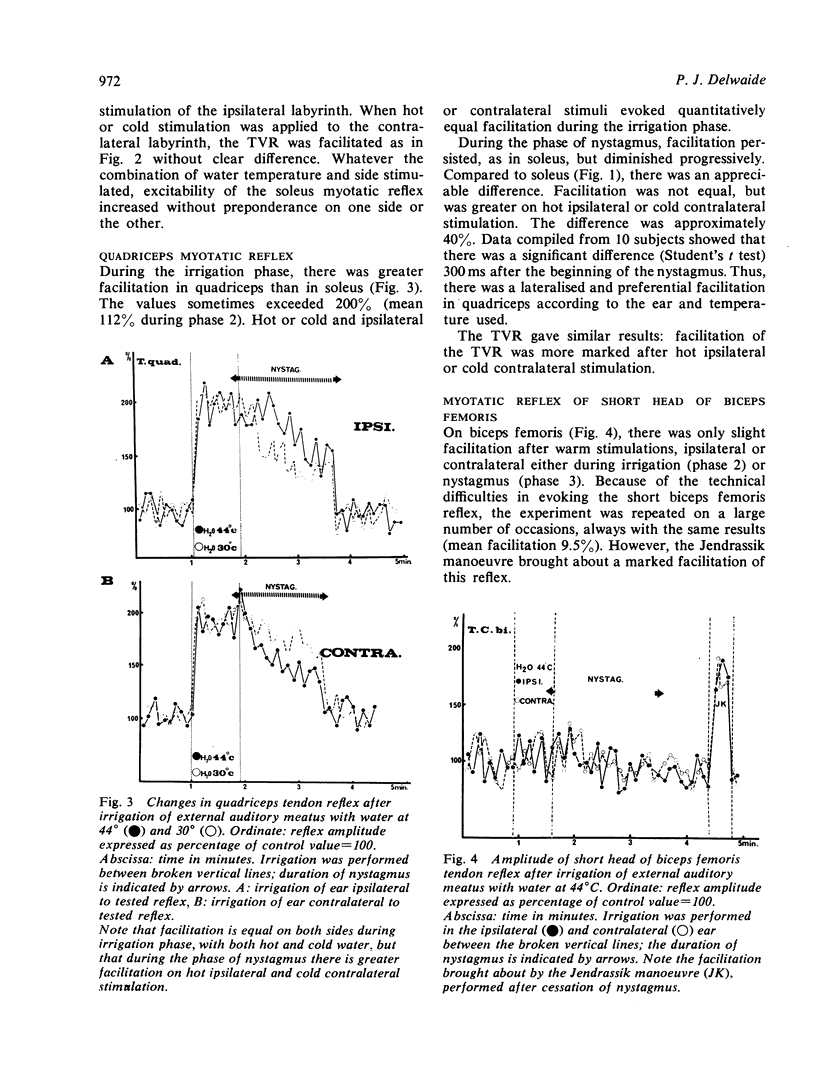
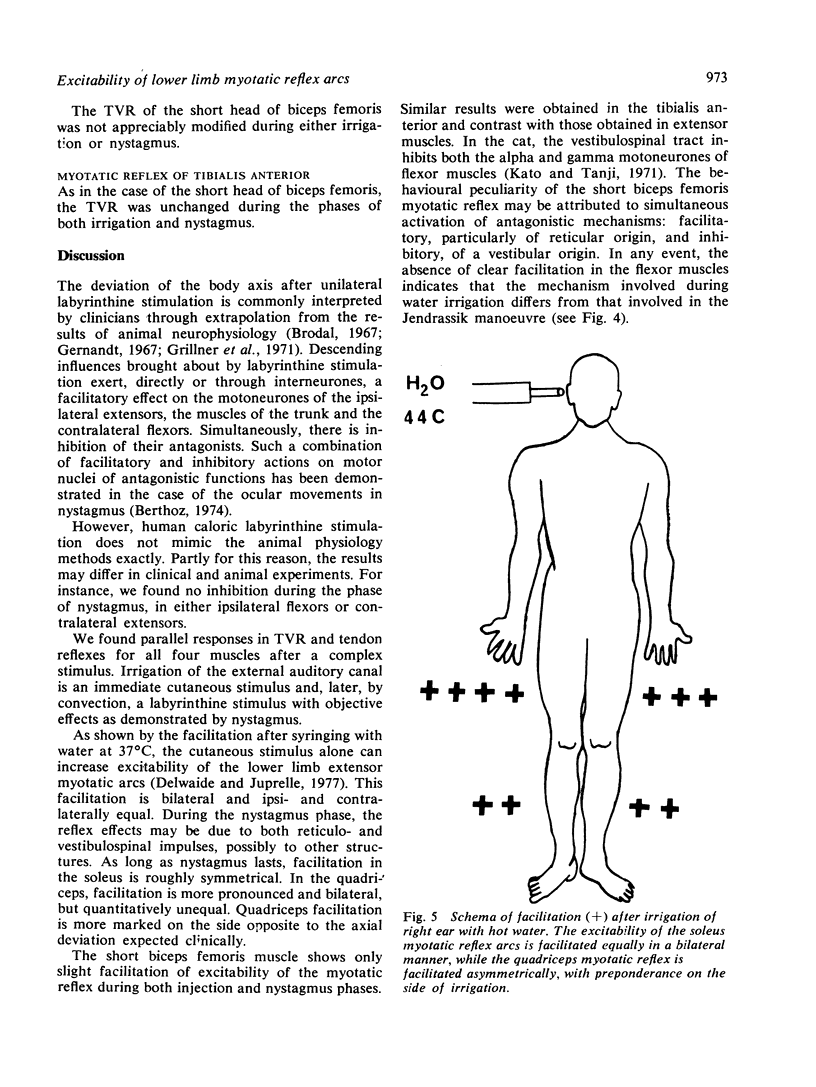
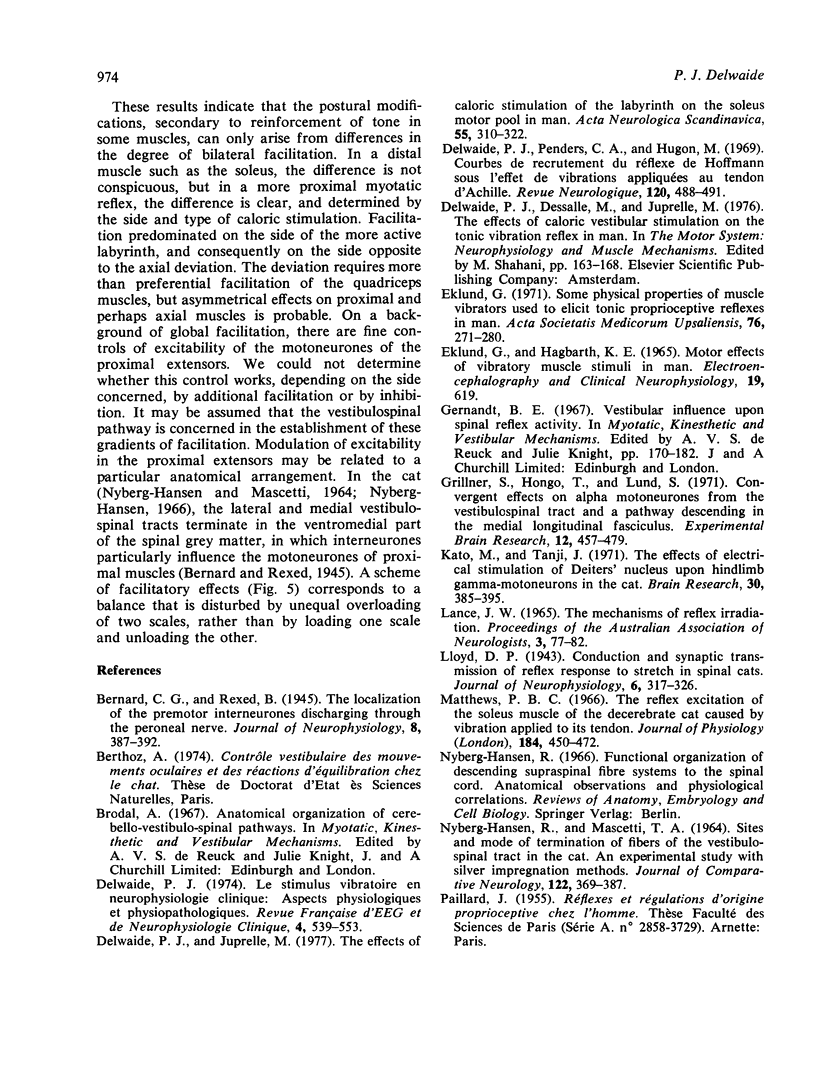
Selected References
These references are in PubMed. This may not be the complete list of references from this article.
- Delwaide P. J., Juprelle M. The effects of caloric stimulation of the labyrinth on the soleus motor pool in man. Acta Neurol Scand. 1977 Apr;55(4):310–322. doi: 10.1111/j.1600-0404.1977.tb05650.x. [DOI] [PubMed] [Google Scholar]
- Delwaide P. J. Le stimulus vibratoire en neurophysiologie clinique : aspects physiologiques et physiopathologiques. Rev Electroencephalogr Neurophysiol Clin. 1974 Oct-Dec;4(4):539–553. doi: 10.1016/s0370-4475(74)80042-0. [DOI] [PubMed] [Google Scholar]
- Delwaide P. J., Penders C. A., Hugon M. Courbes de recrutement du réflexe de Hoffmann sous l'effet de vibrations appliquées au tendon d'Achille. Rev Neurol (Paris) 1969 Jun;120(6):488–491. [PubMed] [Google Scholar]
- Eklund G. Some physical properties of muscle vibrators used to elicit tonic proprioceptive reflexes in man. Acta Soc Med Ups. 1971;76(5-6):271–280. [PubMed] [Google Scholar]
- Grillner S., Hongo T., Lund S. Convergent effects on alpha motoneurones from the vestibulospinal tract and a pathway descending in the medial longitudinal fasciculus. Exp Brain Res. 1971 Jun 29;12(5):457–479. doi: 10.1007/BF00234243. [DOI] [PubMed] [Google Scholar]
- Kato M., Tanje J. The effects of electrical stimulation of Deiters' nucleus upon hindlimb -motoneurons in the cat. Brain Res. 1971 Jul 23;30(2):385–395. doi: 10.1016/0006-8993(71)90088-6. [DOI] [PubMed] [Google Scholar]
- Lance J. W. The mechanism of reflex irradiation. Proc Aust Assoc Neurol. 1965;3:77–81. [PubMed] [Google Scholar]
- Matthews P. B. The reflex excitation of the soleus muscle of the decerebrate cat caused by vibbration applied to its tendon. J Physiol. 1966 May;184(2):450–472. doi: 10.1113/jphysiol.1966.sp007926. [DOI] [PMC free article] [PubMed] [Google Scholar]
- NYBERG-HANSEN R., MASCITTI T. A. SITES AND MODE OF TERMINATION OF FIBERS OF THE VESTIBULOSPINAL TRACT IN THE CAT. AN EXPERIMENTAL STUDY WITH SILVER IMPREGNATION METHODS. J Comp Neurol. 1964 Jun;122:369–383. doi: 10.1002/cne.901220307. [DOI] [PubMed] [Google Scholar]


